by Steve Selden | Apr 25, 2018 | Conservation
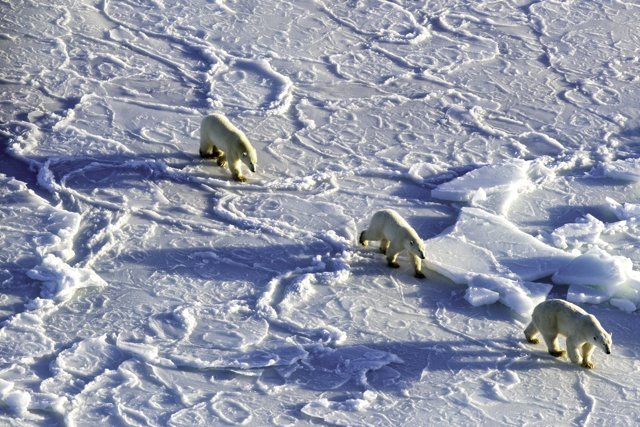
Polar bear sow and two 2-year-old cubs. Brad Josephs photo.
Despite frequent heart-wrenching images of starving polar bears in the news recently, populations of polar bears are apparently thriving in the Nunatsiavut region of northern Labrador. This is some welcome good news on the status of polar bears in the Arctic.
Based on a quota of 12 polar bears from licenses granted this year by the Nunatsiavut government, wildlife manager Jim Goudie reported that the Inuit quota was filled within the initial seven days of the season.
“There are lots of signs of bears,” he told CBC Radio’s Labrador Morning. “Lots of bears and a continuation of what we’ve seen over the last three or four years.”
According to Goudie, a 2007 survey showed there were around 880 polar bears in the northern Quebec and Labrador regions while the revised numbers recorded show 2,152. This increase is a dramatic rise in the population. Researchers are involved in a two – year study that is indicating even more positive numbers.
“You can go wherever you want to within Nunatsiavut or the Labrador Inuit settlement area to harvest your polar bear,” he said. “Anywhere outside of Nunatsiavut boundaries, the harvest would be illegal.”
To keep track of polar bear pelts that are often sold to wealthy suitors from Asia to Canada, the furs are embedded with a computer chip validating when and where it was taken as well as proof it was acquired through a legal hunt and not poached. Any meat that is not used by the hunters must be donated.
“I think our polar bear population is very, very healthy,” he said. “The Davis Strait polar bear population is probably one of the most healthy in Canada, and certainly in the world.”
With regards to other populations in general, Goudie says most are in good standing and only a few are declining. Still, the fear propaganda is in the news and can be misleading.
Goudie highlights a National Geographic post showing it first look a starving polar bear, but in reality, the polar bear was sick and not long for life.
“It’s an easy story to put out there, that polar bears are in massive trouble. Sometimes I have to bite my tongue or keep my fingers off the keyboard when I see those social media posts,” he said.
Hopes are high that all polar bear populations in the Arctic will continue to thrive and adapt to a warmer climate in the coming years.
by Steve Selden | Dec 6, 2017 | Conservation
Churchill is famous for its polar bears and has been dubbed the Polar Bear Capital of the World for a destination to see numerous polar bears in and around the town.
Now Churchill Mayor Mike Spence wants to have serious conversations with the provincial government about finding alternatives to shipping the animals to Winnipeg and other destinations where they ultimately end up spending the rest of their lives in zoos.

Churchill Mayor Mike Spence wants polar bears to have alternatives other than being sent south to Winnipeg.CBC photo.
Churchill Mayor Mike Spence and other Churchillians are concerned the old habit of just relocating orphaned cubs is outdated and archaic. The most recent capture of a pair of orphaned polar bear cubs from different mothers by provincial conservation officers has them talking and advocating for a different fate for the animals.
“It has always been an issue here,” says Spence.
“Polar bears are a critical part of the community. But once you have taken them out of the population, that’s it. They’re gone. I’ve told the minister we want to sit down and talk.

Polar bear cubs approach the polar rover within a few feet. Jeff Klofft photo.
“We want to get more research on polar bears. We need to do things differently. We can’t just continue to do nothing other than shipping them off to zoos.”
According to Spence, ideas for changing the current protocol include tracking devices to monitor the bears’ travel and a facility designed to allow the bears to be reintroduced into the harsh northern environment.
“We need to do something more than just saying, ‘Another bear gone to the zoo,’” he said. “We don’t accept sending cubs to captivity is the answer.”
The latest capture, like nearly all the polar bears relocated in recent years, will end up at Assiniboine Park Zoo’s Leatherdale International Polar Bear Conservation Centre.
Statistics, as vague as they might be, tend to point to unfavorable survival rates when young abandoned cubs are left in the wild. Sustainable Development Minister Rochelle Squires states that scientists know there is little hope for those animals.
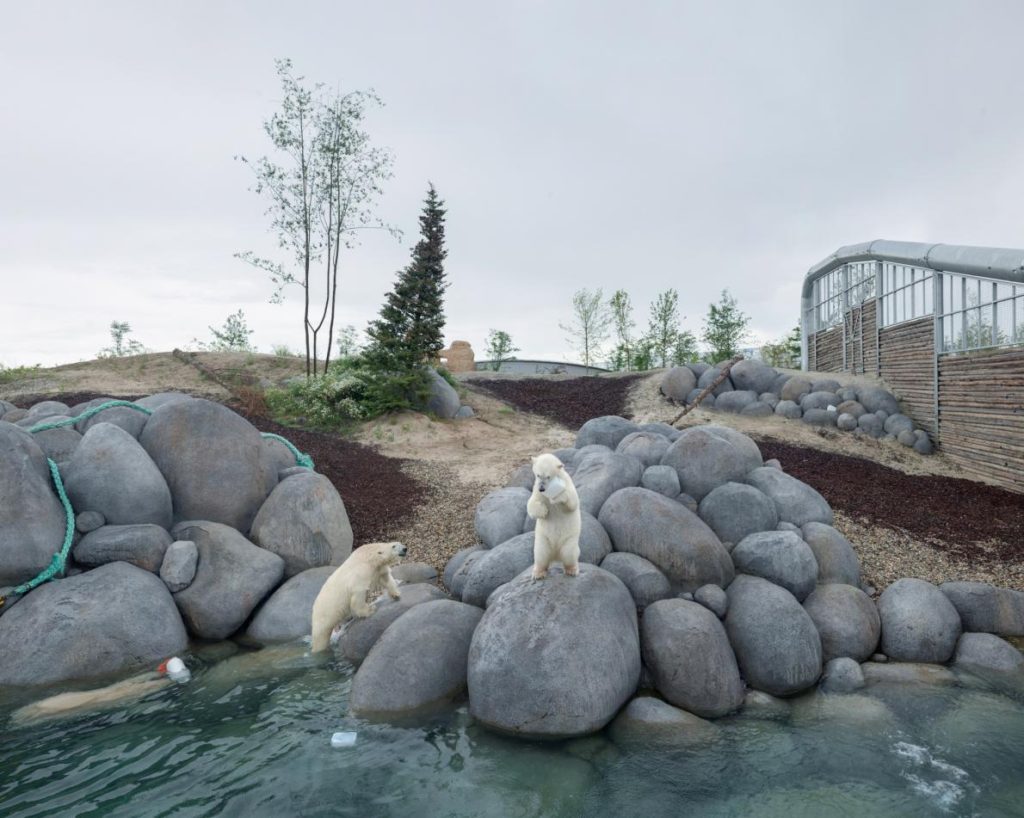
Polar bears living out their lifespan in the Netherlands Wildlands Zoo. Sheng – Wen Lo photo.
“The unfortunate reality is that young cubs have very little chance of survival without their mother,” Squires said.
“Without a female to protect them, cubs are highly vulnerable to natural predators and also to the significant risk of starvation. Polar bear cubs depend on their mothers until they are about 2 1/2 years of age, by which time they’ve grown and learned to hunt for their own food.”
“Polar bears truly are irreplaceable and we consider them a jewel for the community of Churchill. For that reason, we will continue to devote resources to managing polar bears in the area and producing new research that supports their sustainability. While the Department of Sustainable Development is keenly focused on ensuring their survival, our government is committed to working collaboratively with the community to determine the future of these orphaned polar bears cubs.”
Let’s hope these new ideas come to fruition in the near future. Polar bears should be in the wild not automatically sent to zoos without exploring other options.
by Steve Selden | Sep 22, 2017 | Conservation

Narwhal tusks can grow more than 8 feet in length and demand high prices on the black market. Paul Nicklen/Getty Images photo.
Retired Canadian Mountie Gregory Logan, 60, of Saint John has been sentenced to five years and two months in a United States federal prison for smuggling nearly 300 Narwhal tusks with a value of $1.5 – $3 million US into Maine. The contraband tusks were hidden in false compartments in Logan’s vehicle according to U.S. prosecutors. Once in the United States, they were shipped from a post office box in Ellsworth, Maine, to wealthy buyers all across the country.
This story was first reported on in a March 2016 blog post on this site.
Narwhals, protected in the United States and Canada, grow ornate, spiral tusks that can grow longer than eight feet and are coveted for use in carvings, jewelry-making, and general display. Under the 1972 Marine Mammal Protection Act, it is illegal to transport any parts of a Narwhal across federal borders.
According to the indictment, Logan smuggled the narwhal tusks into the U.S. in 2000 while he was working as a Mountie. He retired from the police force in 2003.
Logan filled orders with his U. S. co-conspirators according to what they wanted in terms of quantity and size and then contacted northern Inuit hunters to supply the tusks.
“Unlawful wildlife trade like this undermines efforts by federal, state, and foreign governments to protect and restore populations of species like the narwhal, a majestic creature of the sea,” said acting Assistant Attorney General Jeffrey H. Wood of the Department of Justice’s Environment and Natural Resources Division.
U.S. District Court Judge John A. Woodcock sentenced Logan to money-laundering and conspiracy charges to which he pleaded guilty. Smuggling charges were dropped under a plea agreement. Logan has paid $350,000 in fines and served four months of home detention on a related wildlife – smuggling charge to which he plead guilty.
Co-conspirator and U.S. resident Andrew Zarauskas, of Union, N.J., was convicted and sentenced to 33 months. A Tennessee man had charges dismissed. Logan was pinned as the leader and organizer of the scheme and therefore sentenced most harshly.
“He directed and organized the way in which the tusks were smuggled and shipped as well as the ways in which the proceeds would ultimately be laundered into Canada. In sum, (Logan) was the ‘hub’ without whom the ‘spokes’ could not have succeeded in their joint criminal enterprise,” they said in court documents.
The U.S. Department of Justice detailed how the scheme worked in a news release:
“Logan knew that his customers would re-sell the tusks for a profit and in an attempt to increase that resale price, Logan would occasionally provide fraudulent documentation claiming that the tusks had originally belonged to a private collector in Maine who had acquired them legally,” it said.
“In addition to shipping the tusks from Maine, Logan maintained a post office box in the Ellsworth shipping store as well as an account at a bank in Bangor. Logan instructed his customers to send payment in the form of cheques to the post office box, or wire money directly to his Maine bank account.
“Logan then transported the money to Canada by having the shipping store forward his mail to him in Canada, and by using an ATM card to withdraw money from his Maine bank account at Canadian ATM machines. At times, Logan also directed his customers to send funds directly to him in Canada.”
by Steve Selden | Jul 31, 2017 | Conservation

Caribou gather near Roundrock Lake west of Lac de Gras in N.W.T. Anne Gunn/COSEWIC photo.
The Canadian government will be implementing a protection plan for the threatened boreal or woodland caribou herd in the north. The decision comes three months after the Canadian Parks and Wilderness Society (CPWS) filed a judicial review application in Federal Court this past April outlining how Environment minister Catherine McKenna concealed protection plans from the public regarding the herd.
The federal plan reaffirms the jurisdiction of territorial and provincial governments over the land responsibility where the caribou naturally roam. Progress reports will be required by federal officials ensuring recovery and protection efforts are being carried out effectively. Over 80 per cent of the country’s woodland caribou herds are considered in decline.
An attorney for the CPWS, Frederic Paquin, has cited the Species at Risk Act as a reason to open the discussion to “form opinions regarding whether or not the critical habitat of the woodland caribou is being protected in a sustainable manner.” Federal government press releases have qualified the new plan as “fulfilling Canada’s commitments under the federal Species at Risk Act.”
Environmental activists are skeptical of the scope of the new plan in informing Canadians what the federal government is doing toward conserving the various caribou herds in a timely and comprehensive manner.
The Canadian Parks and Wilderness Society emphatically states that it will continue pushing for transparency from Environment Canada through legal action even after government action.
CPWS biologist Alain Branchaud, states Minister McKenna is required to report on which herds remain unprotected and what actions are being taken to preserve the caribou herds. Branchaud does not believe the outlined government plan successfully does what is needed for complete protection.
by Steve Selden | Jul 26, 2017 | Conservation
Churchill received a makeover recently and the murals that now adorn some formerly vacant walls are nothing less than breathtaking. Sea Walls: Artists for Oceans is the official sponsor and organizer for these magnificent art works. The foundation seeks to convey ocean conservation to communities around the world through art work murals. Over 200 international contemporary artists have created close to 300 murals in 12 countries since 2014.
Sea Walls is seeking, through their public art displays, to educate the public in a non-confrontational manner and educate all on the impacts of climate change, plastics pollution, overfishing, development and many other types of pollution taking a toll on our seas planet – wide. Through the visual stories portrayed in these murals more people will tend to ask more questions and feel compelled to get involved in protection processes. Churchill is known for the magnificent polar bears that migrate to its shores though the ocean in the form of the Hudson Bay is habitat for many marine wildlife species!
Artists selected for the murals volunteer their time and talents to the noble cause of protecting our life – giving oceans. Research material is provided prior to the project to help artists familiarize themselves with issues threatening the animals in the particular marine environment. The talent these artists have continues to reach high levels and attracts more and more attention to the cause of conservation of our planet!
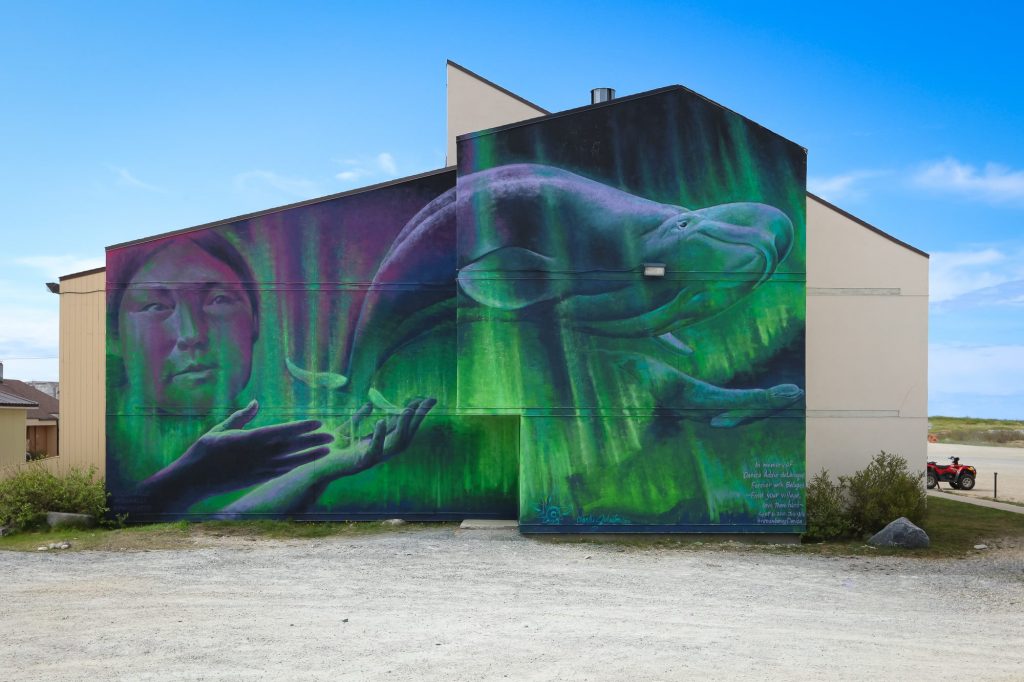
Churchill Sea Walls mural by artist Charlie Johnston. Tre Packard photo.
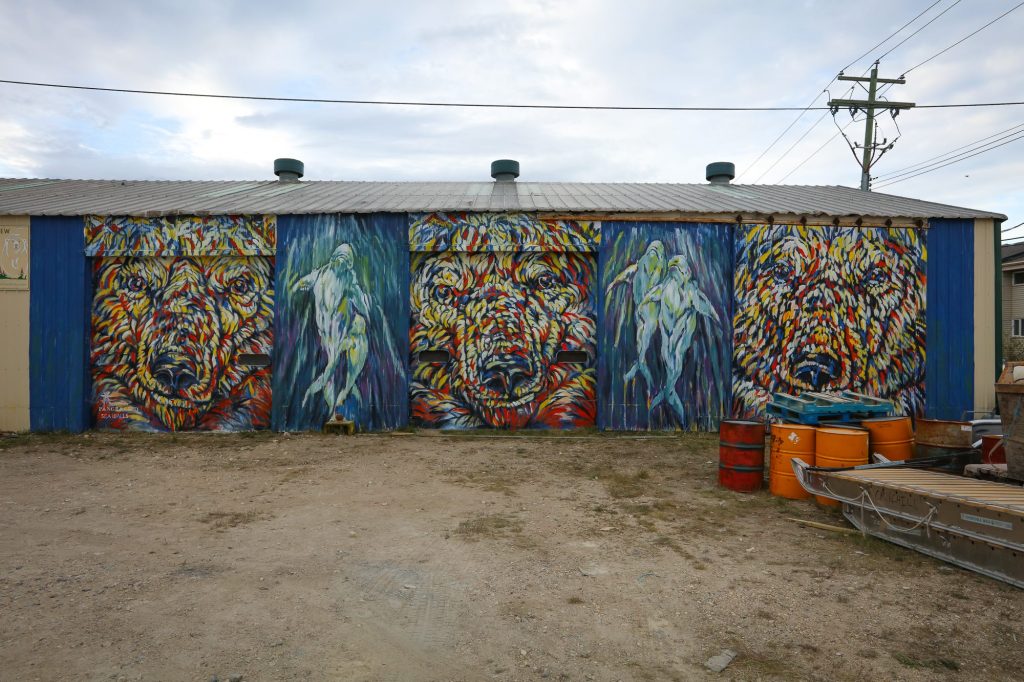
Churchill Sea Walls mural by artist Kelsey Eliasson. Tre Packard photo.
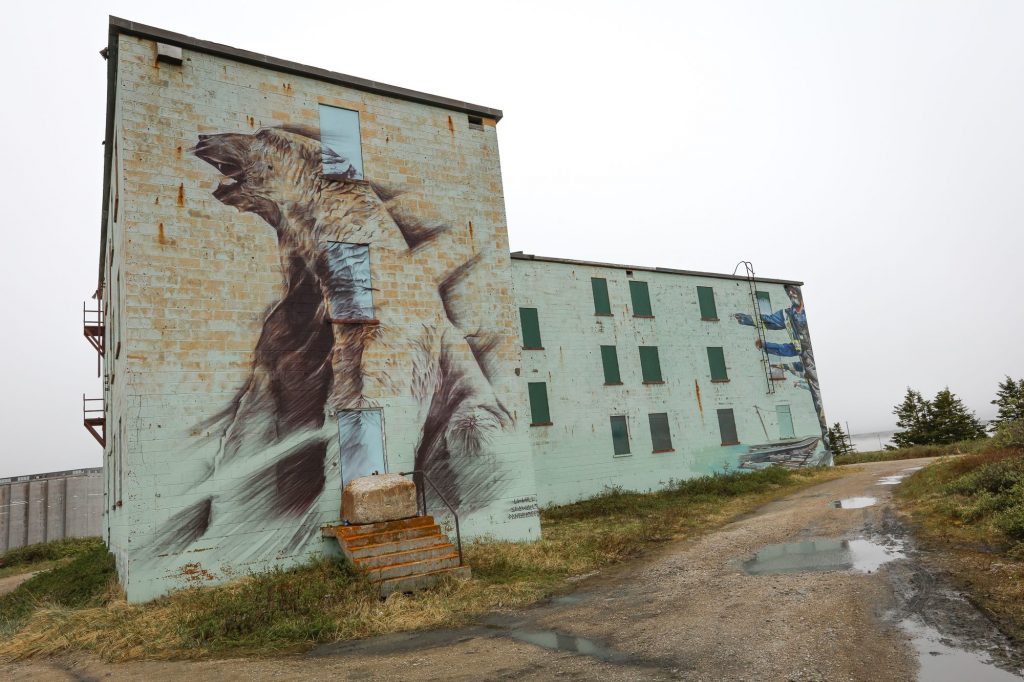
Churchill Sea Walls mural by artist Li Hill. Tre Packard photo.
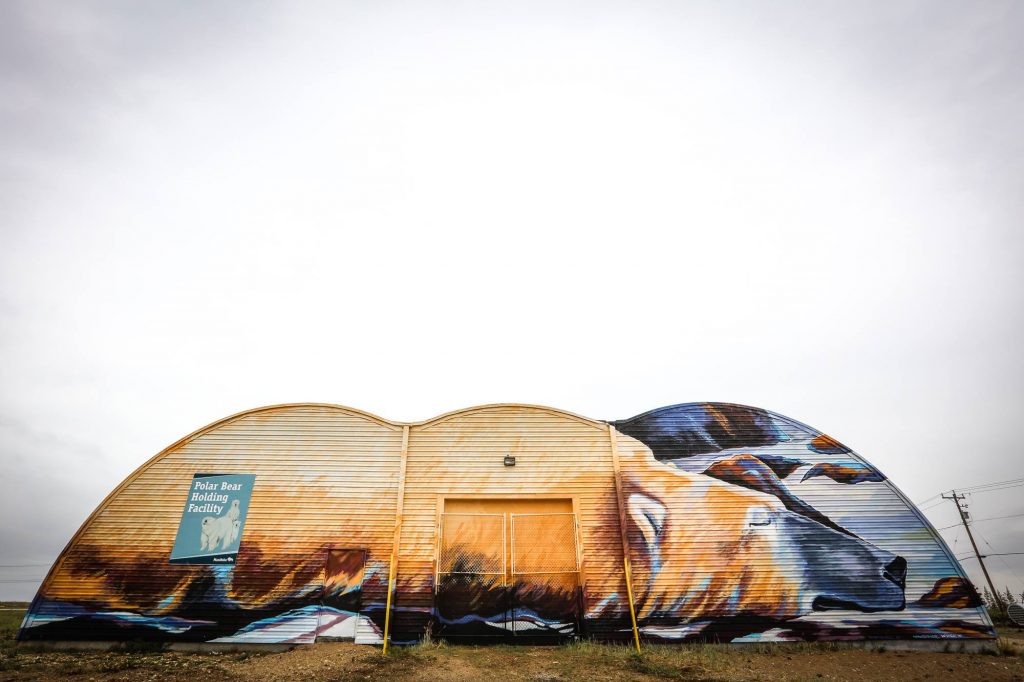
Churchill Sea Walls mural by artist Kal Barteski. Tre Packard photo.

Churchill Sea Walls mural by artist Case Maclaim. Tr Packard photo.
by Steve Selden | May 22, 2017 | Conservation

The Global Seed Vault in Norway will undergo improvements. Getty Images photo.
Norway will make critical improvements to the Global Seed Vault located on Svalbard Island in the Arctic. Melting permafrost in an unusual Arctic summer caused water to enter the front section of the vault. No stored seeds were damaged though safeguards will be taken to prevent future incidents of risk.
The storage facility lies predominantly inside a mountain with consistent cool temperatures ideal for preserving seeds from around the world.
Ironically the protected storage facility stores seeds in case a country sustains a disaster of some sort that necessitates replanting of key vegetation and plants. Nobody anticipated that the facility would have its own near – disaster. Water from melting permafrost seeped into the entry tunnel though never made it further into the storage area.
Plans to waterproof the walls as well as install drainage ditches outside the vault entrance are underway to ensure the precious seeds are safe. Scientists describe the vault as the most important room in the world.
When the vault was constructed, the idea of permafrost melting this far north was unheard of. In a short period of time we have seen climate changes of an extreme measure. Last October temperatures rose from a normal of -10C to around 0 C…causing meltwater to appear.
Statsbygg, the agency that administers the vault, are committed to conduct research to monitor the permafrost on Svalbard and the surrounding Arctic.
The vault stores seeds from nearly 5,000 crop species from all over the planet. The dried and frozen specimens can be preserved for hundreds of years in the vault. Most countries on Earth have their own emergency supply of seeds though they also store back-ups at the Global Seed Vault.













